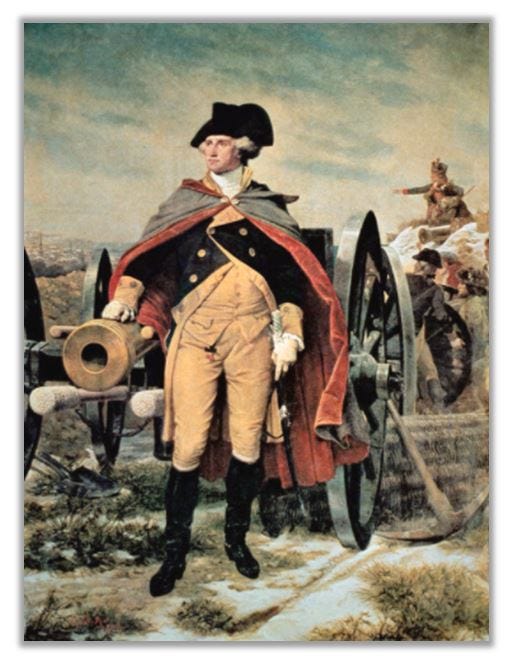TDIH: George Washington's victory at Boston
Fortifications had to be built in advance, as they couldn't be constructed in one night atop an icy hill. The pre-constructed defenses then had to be dragged up the steep hill, quickly and in secrecy.
On this day in 1776, the British army evacuates Boston. A bedraggled band of colonists had kept the city under siege for nearly a year—ever since the “shot heard ‘round the world” at Lexington Green.
What a slap in the face for the powerful British Army.
The British might never have been forced out but for American Colonel Henry Knox. In the early months of the siege, Knox had an idea: Why not retrieve the British cannons and artillery that could be found at Forts Ticonderoga and Crown Point? Those forts had been captured by Americans, and the cannons were now available—assuming someone could make the trip.
The journey would be no easy feat. The Forts were hundreds of miles away, near Lake Champlain in New York. By then, it was winter. Travel would be rough. But General George Washington trusted Knox to finish the mission.
Knox arrived at Fort Ticonderoga in early December 1775. He selected 58 mortars and cannons to haul back to Boston. Historian David McCullough reports that the collective weight of these items was at least 120,000 pounds.
Knox planned to ship the cannons down Lake George before beginning the laborious trip overland: nearly 300 miles. He had hired men to help him, but ice and rough winds complicated the voyage across the lake. One ship even sank and had to be bailed out.
More problems arose after they came ashore.
Knox had arranged for sleds and oxen to haul the cannons, thinking that there would be snow to assist the journey. But there was no snow. Okay, so there was no snow at first—then there was a blizzard and too much snow! The convoy overcame other difficulties, too: A cannon broke through ice on the Hudson and sank. Fortunately, it was retrieved. At another point in the journey, the men had to figure out how to get the heavy cannon down some steep hills. Gravity was a hard foe to beat. They ended up tethering the cannon to trees and slowly inched them down the hill.
Against all odds, Knox reached Washington’s army in mid-January 1776. “Knox’s ‘noble train’ had arrived intact,” McCullough writes. “Not a gun had been lost. Hundreds of men had taken part and their labors and resilience had been exceptional. But it was the daring and determination of Knox himself that had counted above all.”
The cannons changed everything. Washington now had tools with which to work. He’d use them to occupy and fortify Dorchester Heights, overlooking Boston. The move would put the British lines well within range of the new American cannons. Washington determined to accomplish this feat in the middle of the night.
He’d take the British by surprise.
The story of Dorchester Heights is enough to fill its own post. For now, suffice it to say that the middle-of-the-night effort was another amazing feat for Washington’s relatively untrained army. Fortifications had to be built in advance, as they could not be constructed in one night atop an icy hill. Then the pre-constructed defenses and cannons had to be dragged up the steep hill at Dorchester Heights, quickly and in secrecy.
Washington’s men managed the task in one night. On the morning of March 5, the British awoke to a surprising sight: American cannons were now staring down at them from the newly fortified Dorchester Heights.
On March 17, the British finally evacuated Boston, restoring the city to American control.
All in all, it was an astonishing victory for the newly appointed Washington.
Sources can always be found on my website, here.





I'm impressed by the fortitude of these men to overcome natural barriers. Snow and water and hills. Using the trees to inch the cannons downhill was a brilliant use of a natural resource to accomplish their mission.
Thank you Tara. No need to apologize for a computer glitch. Happens to us all.
I always enjoy your telling of Col. Knox's adventures while collecting and then transporting the heavy cannon across water, land and terrible conditions in the midst of winter, allowing the Americans to boot the British from Boston.